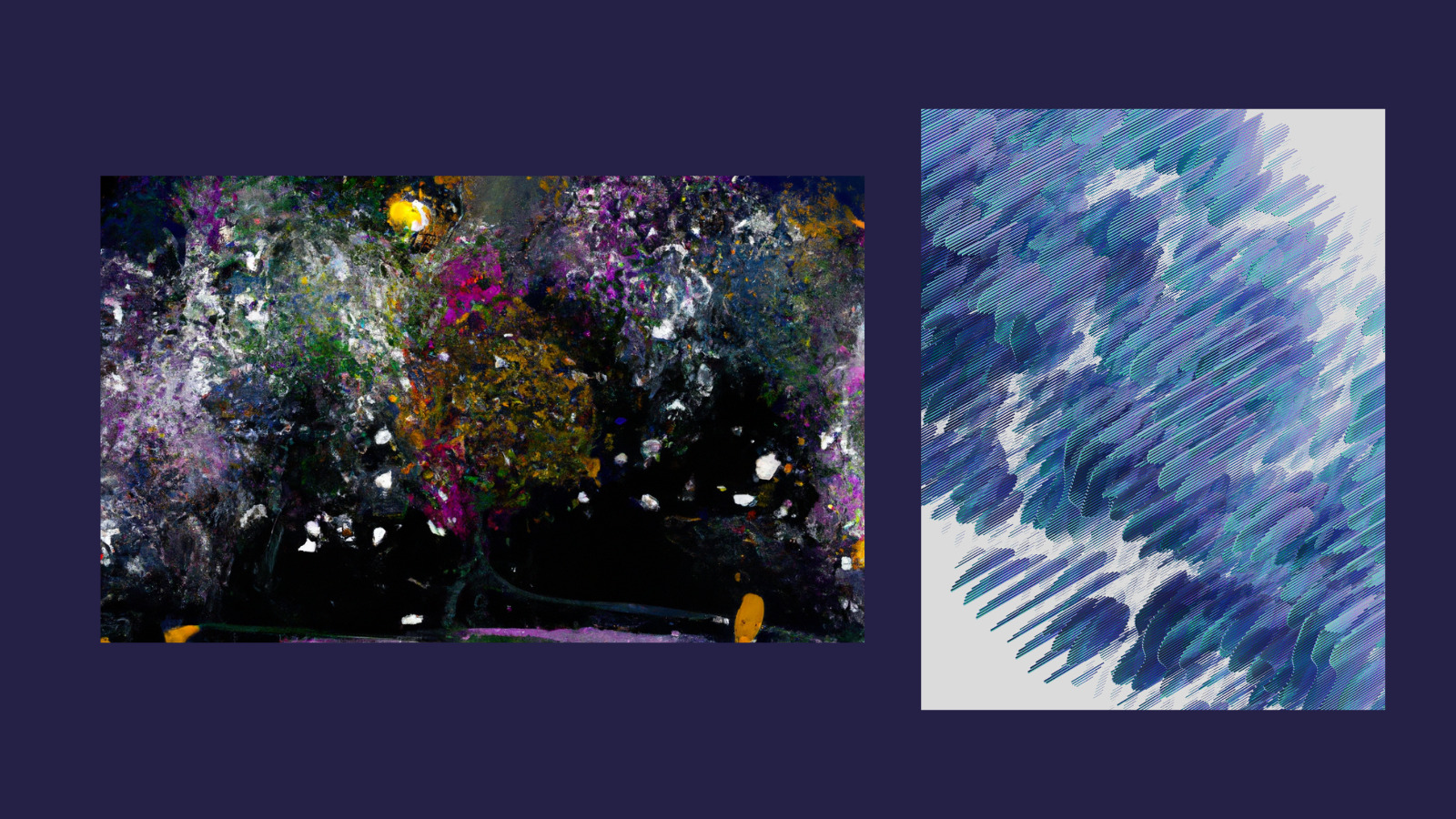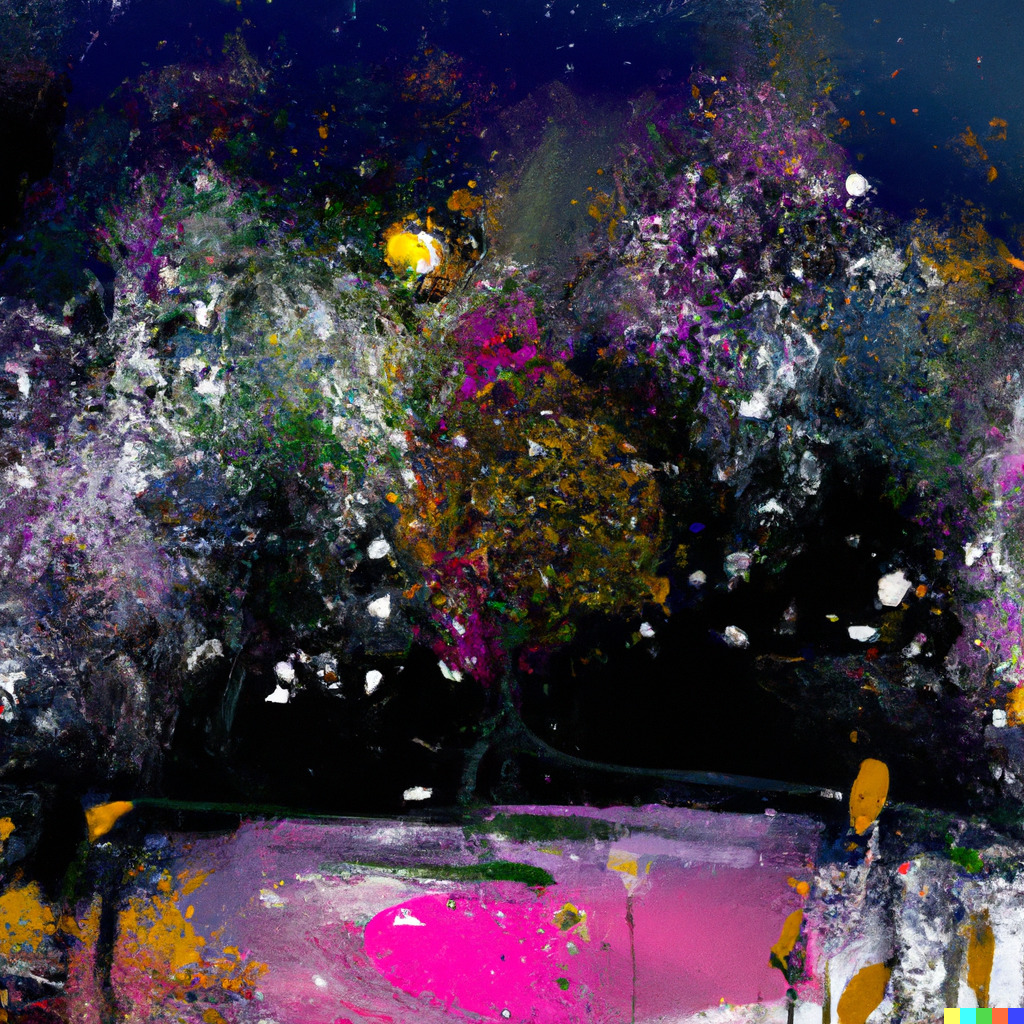
11 Jun Art or Artificial: The Symbiosis of Creativity and AI in the New Artistic Landscape
The Fusion of Art and Artificial Intelligence
In this blog, we’re turning the spotlight on questions that are stirring up quite a storm. Is there room for creativity in an artwork churned out by an algorithm, or is it all cold calculation? As we’re hurtling full-speed into the digital age, are our artists donning new hats? And is the AI juggernaut shaking the very foundations of the art scene?
Now, here’s the kicker: over the years, I’ve had the chance to capture the stories of more than a hundred artists on video. Every coversation, every art piece, every expression, I believe, carries the heartbeat of the artist. So, where does AI fit into this equation?
Just as the discovery of a hidden room in an old, familiar house changes our understanding of it, I invite you to explore the unexpected dimensions that technology has introduced into the realm of art. We’re used to seeing art as a purely human endeavor, but now artificial intelligence has pushed open a door we didn’t know existed, leading us into uncharted territory. This unexpected twist, where the strokes of an artist’s brush are replicated by the cool precision of an algorithm, is reshaping the landscape of creativity and challenging our perceptions of what art truly is.
From Pixels to Paintings: Examples of AI-Created Art
If you’re still finding it hard to grasp, let’s put some meat on the bones with real-life instances of AI-created art that have created ripples around the world.
Take “The Next Rembrandt,” for instance. Imagine an artwork so flawlessly crafted that it could easily pass as an original masterpiece by the great Dutch artist himself. But here’s the plot twist: the artist behind this creation isn’t a person, but an algorithm. This project trained a machine learning algorithm on a treasure trove of Rembrandt’s works, mastering the intricate textures, colors, and forms that define his style. The unveiling of the final product in 2016 left the world astounded. Could a machine really replicate the genius of Rembrandt?
Next, let’s step into the world of “Portrait of Edmond de Belamy“. This historic artwork was born out of a generative adversarial network (GAN) developed by the art collective, Obvious. What makes this artwork stand apart is its claim to fame as the first-ever piece of AI art to go under the hammer at Christie’s, fetching a whopping $432,500 in 2018. Looking at the portrait, one can’t help but wonder: Is it the mystery behind the algorithm or the artwork itself that inspired such a fervor?
From the dreamy to the dramatic, AI art takes many forms. Google’s DeepDream is a perfect example of this versatility. This computer vision program uses a neural network to seek out and amplify patterns in images, leading to surreal, psychedelic transformations. With its vibrant, dreamlike artworks, DeepDream has not only grabbed eyeballs but also triggered important conversations about AI’s artistic capabilities.
And the surprises don’t stop there. Meet AIVA (Artificial Intelligence Virtual Artist), an AI maestro that composes classical music. After being trained on a large corpus of classical music, AIVA uses its knowledge to compose new pieces, a skill that won it recognition by a music society (SACEM) in 2016. Now, that’s music to the ears, isn’t it?
Each of these instances adds a new dimension to our journey, painting a vibrant picture of AI’s influence in art. But they also fuel an essential question: While AI may mimic styles and patterns, can it truly replicate the human touch that breathes life into art? Let’s continue this exploration.
The Human Touch: The Authenticity of AI-Created Art
While these AI creations are undeniably intriguing, my journey filming over a hundred artists has led me to a deep, personal conviction. Art, for me, is more than just a combination of pleasing shapes, colors, or sounds. It is an embodiment of the artist’s experiences, thoughts, emotions, and stories. Each brushstroke carries an imperfection that mirrors our own human flaws, each note resonates with a piece of the artist’s soul, and each image conveys a fragment of their worldview.
The appeal of AI-created art lies in its novelty and the precision it offers, but can it capture the struggle of the artist, their joy, or their sorrow? It’s this struggle, the raw emotions that I have seen artists pour into their work, that makes art human and authentic. It’s the faint lines of a hastily erased mistake on a canvas, the slight tremor in a note strung out on a violin, the emotion-laden crack in a singer’s voice – these are the things that AI, despite its advanced algorithms and intricate patterns, cannot replicate.
AI can learn patterns and mimic styles, but can it experience the beauty of a sunset or the melancholy of a fading melody? These shared experiences and emotions form the foundation of our connection to art. They evoke empathy, provoke thought, and spark conversations. AI, as it stands today, lacks this inherent human capability.
Don’t get me wrong. AI holds massive potential and it is indeed revolutionizing the art world, challenging our preconceptions, and pushing us to redefine boundaries. However, I believe it’s essential to remember the human element in art – the raw, authentic emotions and experiences that resonate with us, that make us feel seen, heard, and understood. Because at the end of the day, art is a celebration of human spirit and existence. And that, dear reader, is something no algorithm can replicate.

The Crossroads of Art and AI
In a blind comparison between AI-generated art and human-created art, it may be challenging, perhaps even impossible, to tell the difference based on visual or auditory cues alone. Technology has advanced to a point where AI can meticulously imitate human artistry, producing pieces that are captivating and aesthetically pleasing. The results can be astounding, leaving even experts puzzled over the origin of the artwork.
However, the art piece itself is just the tip of the iceberg. Beneath the surface lies a rich layer of narrative and context that breathes life into the work. It’s about understanding the artist’s journey, their inspirations and motivations. It’s about exploring the cultural, social, and personal context in which the artwork was created. It’s about the myriad of human experiences and emotions that were instrumental in shaping the artwork.
Imagine two identical paintings. One, born out of an AI algorithm and the other, a product of an artist’s careful strokes. Superficially, they may be indistinguishable, but their underlying narratives are drastically different. The AI-generated art is a product of code, binary, patterns, and probabilities. On the other hand, the artist’s painting encapsulates their thought process, their patience, their time, their emotions, and their story. This additional layer of understanding amplifies the depth of the artwork, establishing a unique bond between the artist and the viewer.
This, I believe, is where the true value of art lies. In its ability to connect us through shared experiences, to ignite conversations, and to bring us closer to understanding the human condition. It’s this rich, underlying narrative that sets apart human artistry from AI-created art. As appreciators of art, it’s up to us to seek out these stories, to engage with them, and to appreciate the art in its entirety, beyond just its surface.
As we pull the curtains on this thrilling exploration, I invite you to ponder the spectacle we’ve just experienced. Art, in its most primal form, is a celebration of the human spirit, a testament to our shared experiences and emotions. It is as much about the person behind the canvas as it is about the masterpiece that unfolds on it. This, in my humble opinion, is where the magic truly lies – in the perfectly imperfect strokes, in the raw emotions poured onto the canvas, and in the untold stories that each creation silently whispers.
If we view art as a reflection of the process and concept behind its creation, the work of Refik Anadol offers a compelling argument for AI’s role in the realm of artistry. This media artist and director, recognized as a pioneer in the digital art landscape, doesn’t merely use AI as a tool. Instead, he embraces it as a creative partner, bridging the gap between the physical and digital worlds. Anadol’s groundbreaking artistry results from a synergetic blend of human ingenuity and artificial intelligence, demonstrating that the value of art extends beyond the algorithm to the unique collaborative interplay that can exist between an artist and AI.. The AI serves as a sort of digital muse, offering Anadol inspiration derived from data sets. The end result is a remarkable fusion of human creativity and machine learning capability, creating art pieces that are truly unique.

Machine Hallucination by Refik Anadol
Whether we’re standing before a Rembrandt masterpiece, listening to the sweet strains of a melody composed by AIVA, or caught in the psychedelic web spun by Google’s DeepDream, let’s remember to look beyond the surface. Let’s strive to appreciate the art in its entirety, to unravel the stories it tells, to revel in the emotions it stirs within us.
Because art, after all, isn’t just about the final product that meets the eye or graces our ears. It’s about the journey, the creator, and the indelible imprint of the human spirit. As we continue to explore and appreciate the expanding world of AI art, let’s ensure we never lose sight of the profound humanity that makes art… well, art.

